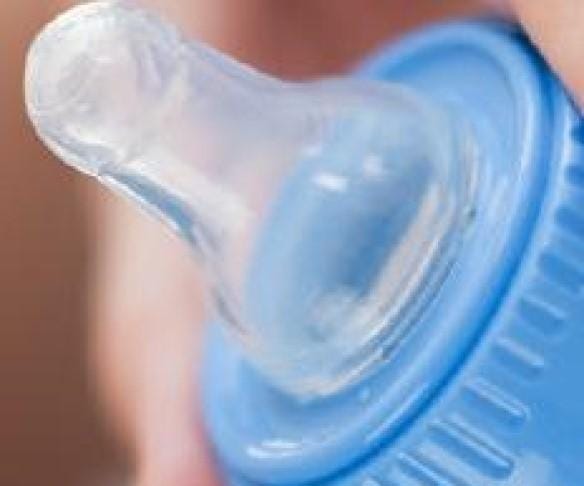Before the Birth
- Have a support system lined up. Set up a conversation with a Gerber Certified Lactation Consultant or reach out to one in your community to help prepare for a successful experience. Having a few girlfriends with breastfeeding experience on standby is also invaluable.
- Talk to your doctor about breastfeeding and prenatal breast care. Let them know your intention to breastfeed your little one and find out what lactation support services are available in your area. You can also sign up for a breastfeeding class with your delivery hospital for additional guidance.
- Find out if the hospital has a Certified Lactation Consultant or schedule a free appointment with ours to discuss breastfeeding for newborns.
When You’re Admitted to the Hospital
- Let the nursing staff at your hospital know you want to breastfeed immediately after birth. Immediate skin-to-skin contact can help increase your milk supply and keep your baby’s temperature and breathing at a normal rate.
- Ask that your plans to breastfeed be put on your chart, and that your baby should not receive bottle feedings or supplements unless medically necessary. You can decide at this time if you'd like your baby to room with you continuously or to stay in the nursery and be brought to you for feedings.
After Your Baby is Born
- Breastfeed as soon as possible, preferably within the first hour of birth. Your baby will benefit from the easy-to-digest antibodies, proteins, vitamins, and minerals right away.
- Practice skin-to-skin contact. Let your labor and delivery team know your wishes to lay your baby on your chest right after birth and until the first feeding is complete. Keep the skin-to-skin contact going during your baby's first few months.
- Breastfeed your baby whenever they’re hungry, which should be at least 8 to 12 feedings in a 24-hour period.
- Breastfeed from both breasts to keep producing breastmilk on both sides. It's best to let your baby complete the feeding on the first breast before offering the second. If they refuse the second breast, offer that breast first at the next sign of hunger.
- Look for hunger signs so you can start feeding before your baby begins to cry. Signs may include increased alertness, rooting (searching for a nipple) or sucking on fingers or hands.
- After a C-section it’s still important to breastfeed as soon as possible. You may find the "football hold" will be the best method putting less pressure on your incision (Imagine the way a football player carries a ball, and you’ll get the idea).
- Remember that breastfeeding should not hurt. Don't wait to get support if you feel pain or discomfort while trying to breastfeed.
Before You Leave the Hospital
- Ask to have a lactation consultant observe you feeding your little one and make suggestions if needed.
- Learn how to hand-express your milk to help your baby latch on easier. If your baby is struggling to latch during the first few hours after birth it often helps to express a little colostrum. If they still aren't able to latch on during the first few days, frequent hand-expression will help establish a good milk supply for later. Softening the breast a little will help baby latch easier, plus hand-expression can be a life saver if your breast gets engorged.
- Get names and phone numbers of the hospital’s breastfeeding consultants so you can call for advice or answers once you and your baby are home.
- Find out if the hospital has a breastfeeding support group that you can meet with regularly after you're released from the hospital.
Once You’re Home
- Ask people for help and guidance, whether it's your doctor, lactation consultant, or a friend or family member who has successfully breastfed. Breastfeeding may not be easy; it may come with challenges you might not expect and can take a little time to get the hang of, so don't be discouraged. If you have questions or concerns about breastfeeding, there are people who can provide answers.




